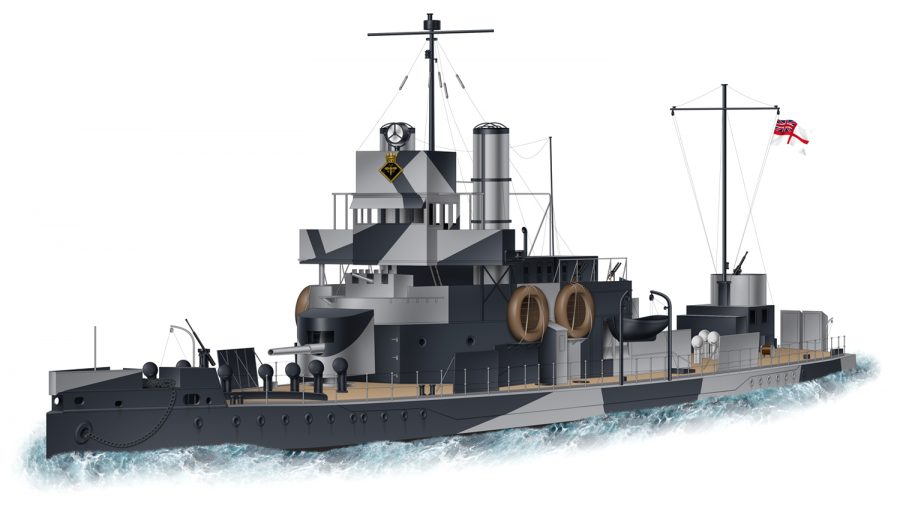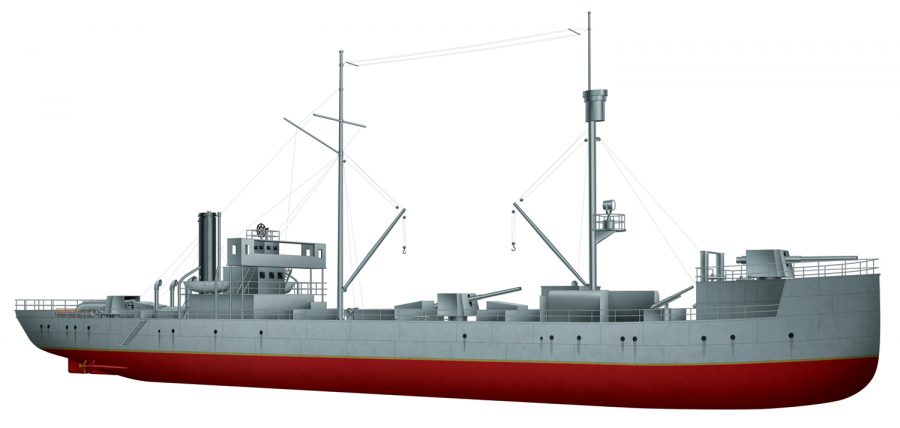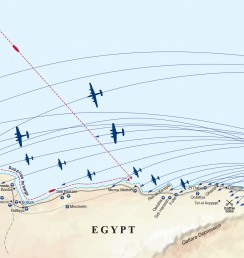Gunboats
 HMS Gnat
HMS Gnat
HMS Gnat was a Royal Navy Insect class gunboat. She was built by Lobnitz and launched in 1915.
During the First World War, Gnat took part in the Mesopotamian Campaign as part of the gunboat squadron operating on the Euphrates and Tigris rivers. In 1927 the Gnat participated as part of a Royal Navy flotilla in the Nanjing incident, helping to protect British and other international citizens and business interests in China.
During the Second World War, Gnat was part of the China Station until 1940, when she was relieved by HMS Grasshopper. She then transferred to the Mediterranean Fleet’s Inshore Squadron. She was torpedoed on 21 October 1941 by the U-79 but she was towed and beached at Alexandria and used as a fixed Anti-aircraft platform.
Declared a constructive total loss, she was finally scrapped in 1945.

Elpidifor 413
Successful multi-purpose ships, projected in the early days of the First World War and based on the Azov Sea steam schooner Elpidifor. In wartime it was planned to use such ships as landing vessels, minesweepers or minelayers, and as merchant ships in peacetime. The universal character of these vessels predetermined a number of special requirements: large capacity, shallow draught at the fore and suitability for Black Sea conditions.
In 1916 a series of 20 vessels (Nos 410-429) was laid down in Nikolaev, but none had been completed when the Russian revolution began. Elpidifors Nos. 410-412 were completed by White Russians in 1919 and subsequently were sent abroad.
After Nikolaev fell to Red Army troops, Elpidifors Nos. 413-417 were completed as gunboats. The rest were completed as tankers and dry cargo vessels.
Capable of carrying up to 6 light tanks or 9 lorries, or 2000 marines, Elpidifor 413 survived the Great War, serving as a minesweeper and gunboat in the 1920s and ended her days as a survey vessel in 1947.




